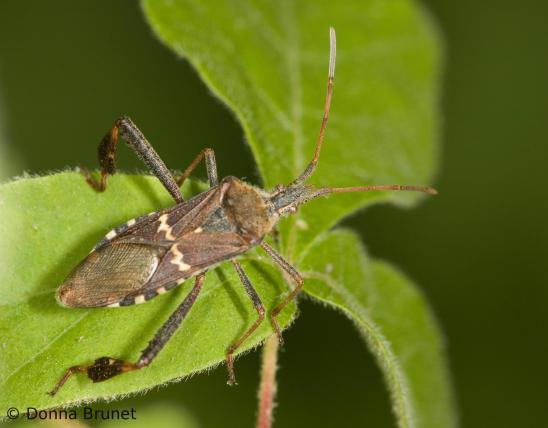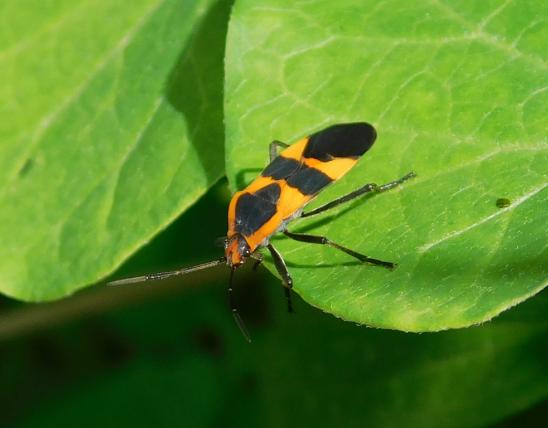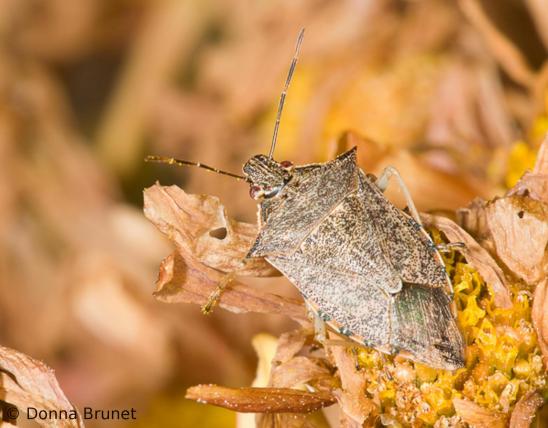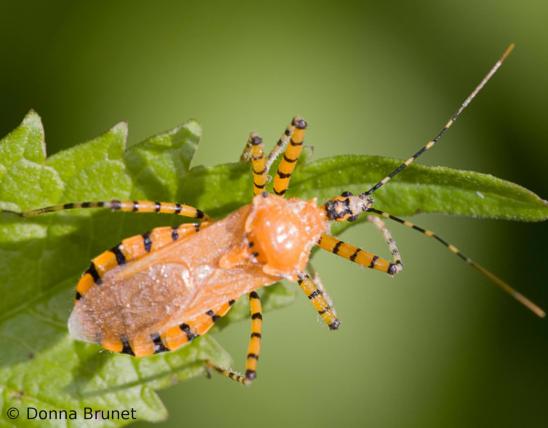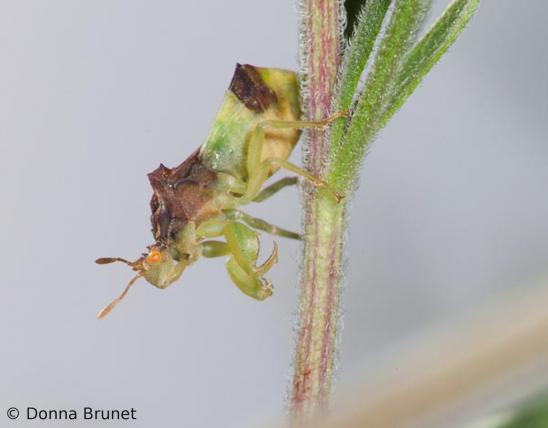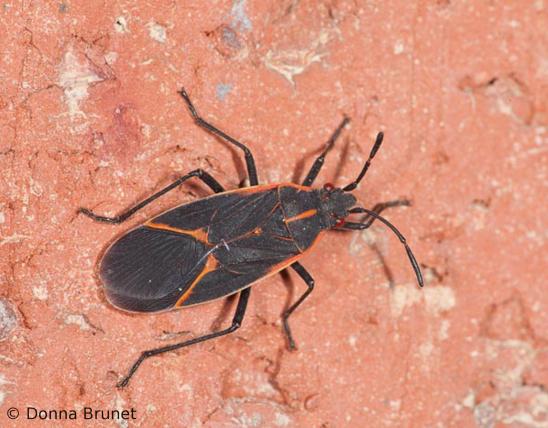
Like most true bugs, squash bugs have membranous wings that fold flat along the back when at rest (often creating an X pattern on the back), and mouthparts joined into a strawlike structure used for piercing and sucking. Squash bugs suck sap from plants in the squash family. Adults of our most common species (Anasa tristis) are shiny, brownish, speckled in the front parts of the body, and rather oval. The head is narrow. Nymphs go through several stages, the youngest light green and aphid- or spiderlike, the older ones grayish, all with dark legs. When disturbed, squash bugs can emit a foul odor.
Similar species: There are nearly 90 species in the leaf-footed bugs family. All are plant-eating bugs that are named for the flattened, leaflike extensions that many have on their hind legs.
Length: to about ¾ inch (varies with species).

Statewide.
Habitat and Conservation
Squash bugs are usually found on or near their food plants: members of the squash family. The bugs usually feed on the undersides of leaves. They can transmit a bacterial disease that harms squash-family plants. Mulch can provide refuge to squash bugs. Gardeners consider squash bugs pests and try to eliminate them. There are many ways to battle squash bugs, and no single method is perfect. Spraying bugs with a mild soap solution can be effective on nymphs.
Food
Like other true bugs (such as cicadas, aphids, stinkbugs, and leafhoppers), squash bugs have strawlike mouthparts adapted for sucking nutrients — in this case, it’s the sap of plants in the squash family, including squash, pumpkins, melons, and cucumbers. When the bugs jab into the plant’s veins, the injury can ruin the plant’s ability to transport water and nutrients, causing wilting and perhaps killing the plant. Squash bugs also feed on the fruits of these plants, marring them.
Status
Common. A pest to crops in the squash family.
Life Cycle
Adults overwinter in sheltered places. In spring they mate and lay small masses of shiny, oval, copper-colored eggs beneath leaves. Hatchlings are pale green. They grow and molt through various immature stages (nymphs). Older nymphs are gray with dark wing buds. Often a mixture of stages congregate together on the same plant. Upon the final molt, they emerge as winged, sexually mature adults. There are at least two broods per year. Squash bugs that are full adults by late fall overwinter.
Human Connections
An important crop pest. Gardeners commonly ask: How can I control these bugs? Hand-picking insects and crushing their eggs, removing mulch and debris from the ground under the plants, and strategic, judicious application of insecticides (whether natural or synthetic), may all help.
Ecosystem Connections
Squash bugs take plant nutrients into their bodies and are then eaten by other animals. Keep this in mind if you are considering insecticides, for birds and other insect-eaters can be harmed indirectly by consuming poisoned insects. Certain parasitic flies and lady beetles feed on squash bugs.




























